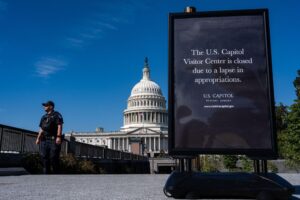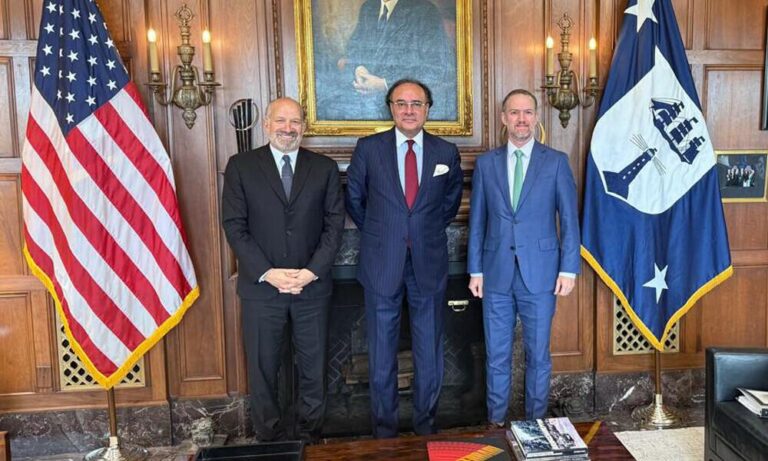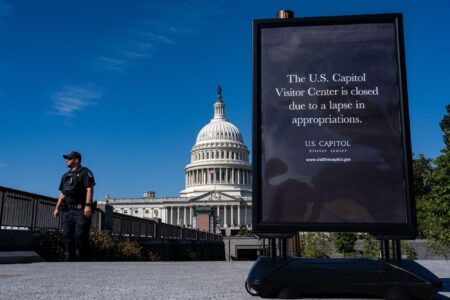Strengthening Pakistan-U.S. Economic Partnerships Through Productive Dialogue
Pakistan recently reported encouraging progress following its trade discussions in Washington, highlighting promising advancements in bilateral economic cooperation. The meetings with senior U.S. trade representatives concentrated on broadening trade relations, tackling existing trade imbalances, and identifying fresh investment opportunities. This initiative aligns with ongoing efforts by both countries to deepen economic ties and foster mutually advantageous partnerships.
Key themes of the dialogue included improving market accessibility, reducing trade barriers, and supporting small and medium-sized enterprises (SMEs) to enhance their competitiveness. Additionally, the talks emphasized upgrading infrastructure to facilitate smoother logistics and supply chain operations. Notable commitments from the discussions encompassed:
- Adoption of advanced digital customs platforms to expedite trade clearance and increase transparency.
- Exploration of collaborative ventures in sectors like agritech and information technology to amplify export capabilities.
- Implementation of capacity-building initiatives such as workshops and exchange programs to nurture innovation and business acumen.
| Trade Initiative | Anticipated Benefit |
|---|---|
| Tariff Adjustments | Lowered trade barriers for priority commodities |
| Customs Digitization | Accelerated processing and enhanced clarity |
| SME Empowerment | Improved access to finance and skill development |
Core Priorities in Pakistan-U.S. Trade Dialogue
The trade negotiations between Pakistan and the United States have underscored several critical focus areas designed to fortify economic collaboration. Central to these discussions were efforts to enhance market penetration for Pakistani exports, simplify customs operations, and stimulate U.S. investments in vital industries such as textiles, agriculture, and technology innovation. Both parties reiterated their dedication to dismantling trade obstacles and harmonizing regulatory frameworks to cultivate a more favorable trade environment.
Furthermore, the talks addressed the growing importance of digital commerce and intellectual property protection in the modern trade landscape. Strategies to combat counterfeit goods and illicit trade were also prioritized to ensure fair competition and transparency. The table below outlines the principal focus areas alongside their strategic objectives:
| Focus Area | Strategic Goal |
|---|---|
| Market Penetration | Broaden export channels for Pakistani products |
| Customs Efficiency | Accelerate and simplify clearance procedures |
| Investment Incentives | Attract U.S. capital into key economic sectors |
| Digital Trade Frameworks | Develop standards for e-commerce and data exchange |
| Intellectual Property Rights | Safeguard innovations and encourage joint R&D |
| Anti-Counterfeit Measures | Strengthen collaboration to curb smuggling and fake goods |
Expert Insights on Enhancing Bilateral Trade Relations
Trade analysts stress the importance of improved connectivity and policy synchronization to elevate commerce between Pakistan and the U.S. They recommend forming dedicated bilateral trade committees tasked with regularly reviewing trade challenges and facilitating swift resolution of disputes. Such bodies could also harmonize customs regulations, significantly cutting down clearance delays and reducing operational costs.
Additional strategic proposals include:
- Investing in modern infrastructure like logistics centers and digital trade hubs to optimize supply chains.
- Promoting technology transfer collaborations to drive innovation-led trade growth.
- Negotiating tariff frameworks aimed at eliminating non-tariff barriers that restrict market entry.
- Fostering cultural and commercial exchanges to build trust and understanding among business communities and policymakers.
| Recommendation | Projected Outcome |
|---|---|
| Joint Trade Committees | Accelerated dispute resolution and regulatory alignment |
| Customs Harmonization | Shorter clearance times and cost efficiency |
| Digital Trade Platforms | Greater SME participation and market access |
| Infrastructure Development | Enhanced supply chain robustness |
Regional Economic Benefits of Pakistan-U.S. Trade Enhancement
Bolstering trade ties between Pakistan and the United States holds significant promise for economic advancement across South Asia. By fostering increased bilateral commerce, both countries aim to correct trade imbalances, expand market reach, and attract substantial foreign direct investment. This economic synergy is anticipated to stimulate job creation, elevate industrial productivity, and promote development in historically underserved border areas, thereby contributing to regional stability. Key sectors targeted for collaboration include textiles, sustainable agriculture, and emerging technology fields, which collectively can uplift local economies and reduce socio-economic vulnerabilities that often fuel extremism.
The discussions also highlighted the necessity of transparent governance and regulatory reforms to facilitate seamless trade operations. The evolving partnership is expected to yield:
- Increased investments in cross-border infrastructure supporting trade corridors
- Greater resilience of supply chains against global disruptions
- Enhanced regional cooperation driven by shared economic goals
| Economic Metric | Forecasted Impact |
|---|---|
| Bilateral Trade Volume | Projected 15% growth within two years |
| Foreign Direct Investment | Annual increase of $500 million |
| Employment Generation | Creation of approximately 50,000 new jobs |
Concluding Perspectives on Pakistan-U.S. Trade Dialogue
In conclusion, Pakistan’s positive appraisal of the recent trade discussions in Washington signals a promising trajectory for bilateral economic relations. As both nations navigate a complex geopolitical and economic environment, the outcomes of these talks could lay the groundwork for deeper cooperation and shared prosperity. Stakeholders, including policymakers and market analysts, will be closely monitoring subsequent developments, underscoring the critical role of sustained engagement in fortifying U.S.-Pakistan trade connections.





